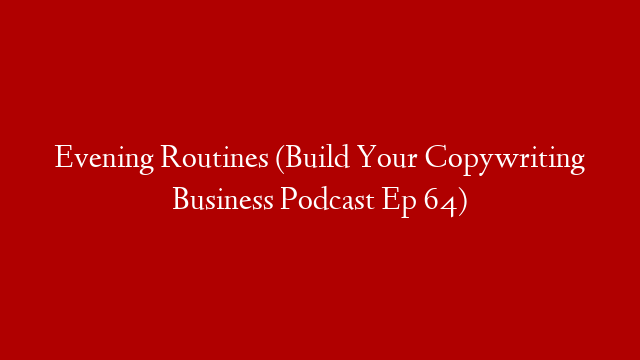What is Copywriting?
Copywriting is generally described as advertising writing or the writing of a publicity copy to promote a person, business, opinion or idea. It may be written in plain text, as a radio or television advertisement or in a variety of other media. The main objective of writing a marketing copy is to persuade the listener or reader to act, such as to purchase a product or service, or subscribe to a certain viewpoint for instance. Copywriting can also serve in dissuading a reader from a particular belief or action.
According to Wikipedia, “copywriting can include body copy, slogans, headlines, direct mail pieces, taglines, jingle lyrics, World Wide Web and Internet content, television or radio commercial scripts, press releases, white papers, and other written material incorporated into advertising media.” A copywriter or the person writing the ad copy can contribute ideas for print ads, mail-order catalogs, billboards, commercials, brochures, postcards, online sites, e-mail, letters and other advertising media.
The Art of Copywriting
The art of writing an advertising copy is based on the assumption that words can change the thinking, attitudes, beliefs, and behavior of an audience. If the writings in a copy fail to provoke attention, interest, desire, conviction, and action, it has failed its task and intent.
One of the oldest advertising copywriting formulae is AIDA: Attention, Interest, Desire, and Action. An ad that does not gain the attention of the reader will not to be able to do anything else. Only after catching attention can an ad arouse the interest of the consumer and create the desire for the product, service, or idea presented. Finally, the ad should stimulate some action by the customer otherwise it has failed in its purpose.
Copywriting Techniques
Some techniques a copywriter can use in writing persuasive ad copies include:
- Clichés or buzzwords, such as, now, new, here, at last, and today.
- Action words, such as buy, try, ask, get, send, taste, watch, look, come, and many more.
- Emotive or exciting words, using adjectives that enhance facts, such as, splendid, amazing, delightful, beautiful, and wonderful.
- Alliteration or a form of repeating sounds pleasing to the ear, but not overdone, obvious, or irritating, such as, ‘Let the train take the strain,’ ‘Don’t be vague, ask for Haig,’ and ‘Go well, go Shell’.
- Colloquialisms or writing to imitate informal speech, such as, ‘Pick ‘n Choose’, ‘Fish ‘n Chips’, and the use of words, such as, don’t, wouldn’t, won’t, what’s, and other abbreviations.
- Punctuations and grammar, such as, ‘Save the children. Now.’ ‘Write his name in gold. Remy Martin.’
- Repetition, such as, the use of same word to open each paragraph, plugging brand or company name throughout the text.
- Intertextuality or the association of a text to other texts or signs, such as the use of the word ‘lock’ to associate with security, or the use of a statement, term or sign from a movie or other media.
When writing a Headline for a print ad, consider the following guidelines:
- Make the headline a major persuasive component of the ad
- Appeal to the reader’s self-interest with a basic promise of benefits
- Inject the maximum information without making it cumbersome or wordy
- Limit headlines to about 5 to 8 words
- Include the brand name in the headline
- Entice the reader to read the body copy
- Entice the reader to examine the visual in the ad
- Never change the typeface in a headline
- Never use a headline whose persuasive impact depends on reading the body copy
- Use simple, common, familiar words
When writing the Subhead, consider the following:
- Subhead should reinforce the headline
- Subhead should entice the reader to proceed to the body copy
- Subheads should stimulate a more complete reading of the entire ad
- The longer the body copy, the more appropriate the use of subheads
- Keep the use of subheads to minimum – they can clutter an ad
When writing the Body Copy, consider the following:
- Use present tense whenever possible
- Use singular nouns and verbs
- Use active verbs
- Use familiar words and phrases
- Vary the length of sentences and paragraphs
- Involve the reader
- Provide support for the unbelievable
- Avoid clichés and superlatives
Common Mistakes in Copywriting
Some common mistakes to be avoided in copywriting include:
- Vagueness, resulting from generalization of words or imprecise meanings.
- Wordiness, where economy of words is paramount because a copy has to fit within limited space and time before it bores the audience.
- Triteness or unoriginality, where the use of clichés and worn out superlatives can create a dull and outdated image for a brand or firm.
- Beyond Creativeness, where creativity is taken overboard for the sake of creativity. A copy must remain true to its primary responsibility: communicating the selling message.
Conclusion
Writing a good copy requires much more than what is mentioned in this article. It requires research, thinking out of the box, and many other aspects. For more tips on copywriting, check out the many resources available on the web and read the relevant books by professional copywriters.


